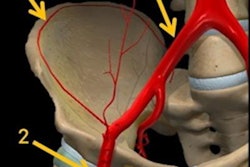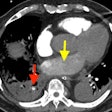Dear CT Insider,
This must surely rate as one of the most striking and original headings for a congress presentation: "Bloody hell: Who is the bleeder?"
The novel title was used by Spanish researchers for an ECR 2022 e-poster about vascular pelvic injuries in blunt trauma patients. The authors showed how CT is the primary diagnostic technique for identifying pelvic hemorrhages, and they won a magna cum laude award for their work. It's today's CT Insider article.
Advances in CT technology are bound to figure prominently at the French national radiology congress, the Journées Francophones de Radiologie (JFR) 2022. As a curtain raiser, we've posted an interview with Congress President Prof. François Cotton, PhD, from Lyon.
Meanwhile, a study questions the value of software-based methods for calculating fractional flow reserve from CT scans (FFR-CT) as a method of analyzing coronary artery disease. Researchers from the U.K. found that FFR-CT software didn't offer any clinical advantage over a standard clinical algorithm.
Medical imaging is a great tool for learning about the secrets of the human body. But what about the secrets of the deepest ocean? It's good for that as well, at least based on one of the more unique studies we've covered recently. Researchers from Denmark used CT to scan one of the world's rarest fishes, the coelacanth, hoping to learn more about the life and habits of this elusive denizen of the deep.
At the European Society of Cardiology's annual congress held in Barcelona, another Danish group reported on their experiences with a population-based cardiac screening program that included CT. You might be surprised at their conclusions.
In this newsletter, we've highlighted a few of the many articles posted in the CT Community over the past month or so. Please scroll through the full list below, and feel free to contact me if you have ideas for future coverage.




















